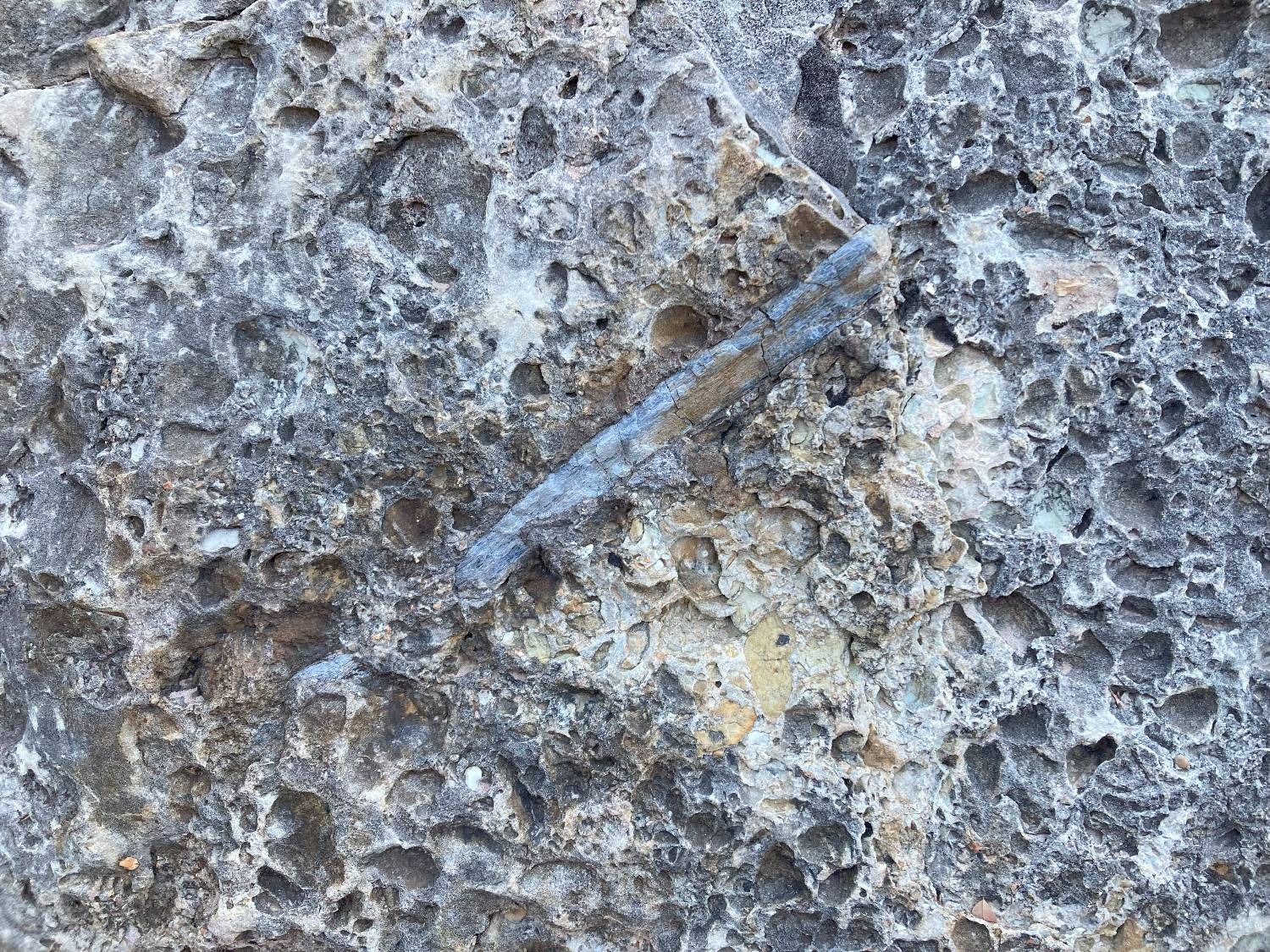Paleontology
Few, if any, detailed paleontological studies have been conducted in the immediate vicinity of Bonderman Field Station. However, one study at the site of the current field station yielded the holotype of a primitive crocodyliform known as Entradasuchus spinosus*. At other sites in the Moab area, sparse fossils have been reported in several of the rock units. For example, over the years a number of University of Utah students, faculty, and technical staff have collected and described species of fossil dinosaurs from the Upper Jurassic Morrison Formation and Lower Cretaceous Cedar Mountain Formation at several sites to the west of Rio Mesa. University of Utah scientists also have studied trace fossils (fossilized burrows) of dune-dwelling insects that are quite common in the Jurassic Navajo and Entrada Sandstones at various locales to the south and west of the field station. Petrified wood, i.e., silicified tree trunks and branches (probably mainly conifers), abound in several of the rock formations in the area. Note that fossil collecting for personal and/or commercial purposes is prohibited in most areas.
* Adrian P. Hunt and Martin G. Lockley (1995) A Nonmarine Tetrapod from the Middle Jurassic of the United States: A Primitive Crocodyliform from the Entrada Sandstone of Eastern Utah. Journal of Vertebrate Paleontology, Vol. 15, No. 3, pp. 554-560.

